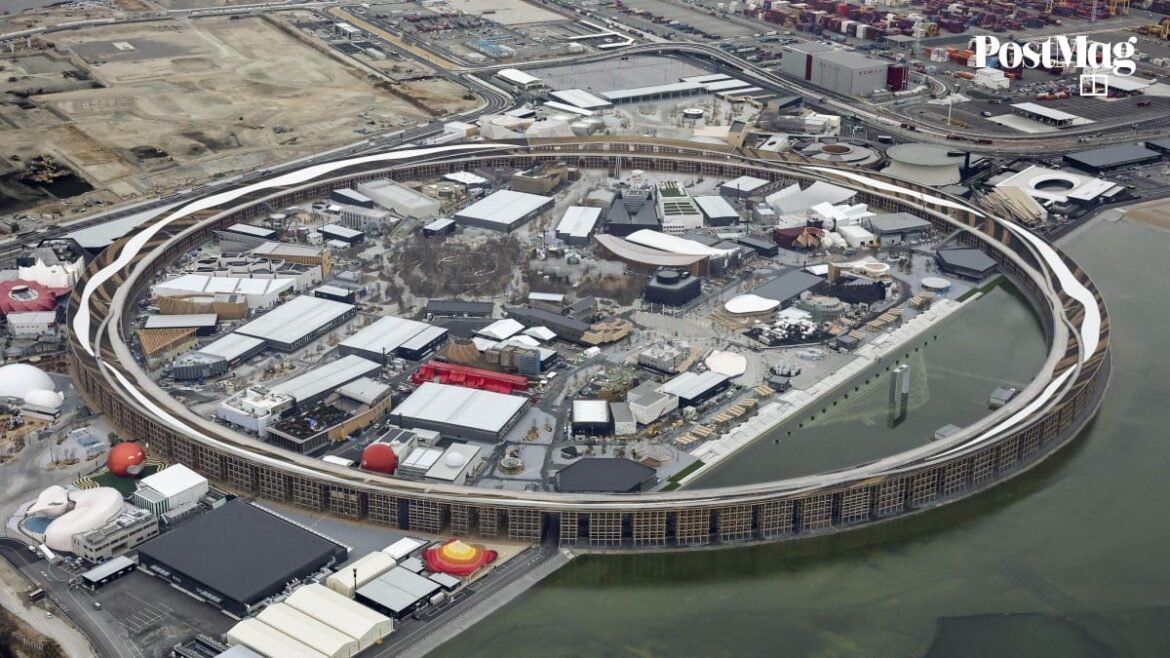In every direction there is fevered activity. Cranes are hoisting, foremen in high-vis jackets are directing, carpenters are hammering, masons are levelling. The smell of newly laid bitumen competes with the rich scent of Japanese hinoki cypress. A saw screeches through sheet metal, a delivery truck beeps as it reverses, instructions are shouted.
Days before the official opening ceremony of the Expo 2025 in Osaka, on April 13, the final push is on to make sure a mammoth event that brings together 158 countries and regions from around the world is a success.With the clock ticking, PostMag has been given exclusive access to the site and a preview of the expo, which will run until October 13. And while questions have been raised about the cost and modern-day relevance of an event that can trace its history back to the grand “expositions universelle” of the 1800s in cities such as Paris, London and Brussels, it is clear that the Osaka Expo 2025 will not only bring together innovations from around the world, but also offer solutions to our planet’s most urgent issues. The Expo 2025 logo, designed to resemble a creature made up of connected red cells, expressing the brilliance of life, adorns manhole covers in Osaka, Japan. Photo: Getty ImagesThe expo is being hosted on Yumeshima, a 390-hectare man-made island in Osaka Bay whose name translates as “Dream Island”. Development of the site has necessitated the construction of comprehensive public transport facilities and many of the 28 million anticipated visitors will arrive using a state-of-the-art subway station.Immediately beyond the entrance gates lies the Grand Ring, the symbol of the expo and the brainchild of architect Sou Fujimoto. The ring encircles the international pavilions and is a latticework of towering cedar, cypress and Scots pine that soars to a maximum height of 20 metres, all put together in the nuki style of Japanese carpentry, which employs the crafted joints and connectors traditionally used in temples and shrines.
The Expo 2025 logo, designed to resemble a creature made up of connected red cells, expressing the brilliance of life, adorns manhole covers in Osaka, Japan. Photo: Getty ImagesThe expo is being hosted on Yumeshima, a 390-hectare man-made island in Osaka Bay whose name translates as “Dream Island”. Development of the site has necessitated the construction of comprehensive public transport facilities and many of the 28 million anticipated visitors will arrive using a state-of-the-art subway station.Immediately beyond the entrance gates lies the Grand Ring, the symbol of the expo and the brainchild of architect Sou Fujimoto. The ring encircles the international pavilions and is a latticework of towering cedar, cypress and Scots pine that soars to a maximum height of 20 metres, all put together in the nuki style of Japanese carpentry, which employs the crafted joints and connectors traditionally used in temples and shrines.
The ring itself is 30 metres across and, on its upper level, has a 2km boardwalk with landscaped gardens, allowing visitors to walk around the entire site. The Grand Ring communicates the concept of “unity in diversity”, expo organisers point out, and, with a surface area of 61,035 square metres, was recognised by the Guinness World Records as the largest wooden architectural structure on the planet.
From the top of the ring, the skyscrapers of Osaka can be seen on the horizon while a steady flow of ships ply the waters around this artificial island. To the west, the city of Kobe hugs the coastline before rising steeply to Mount Rokko.


AloJapan.com